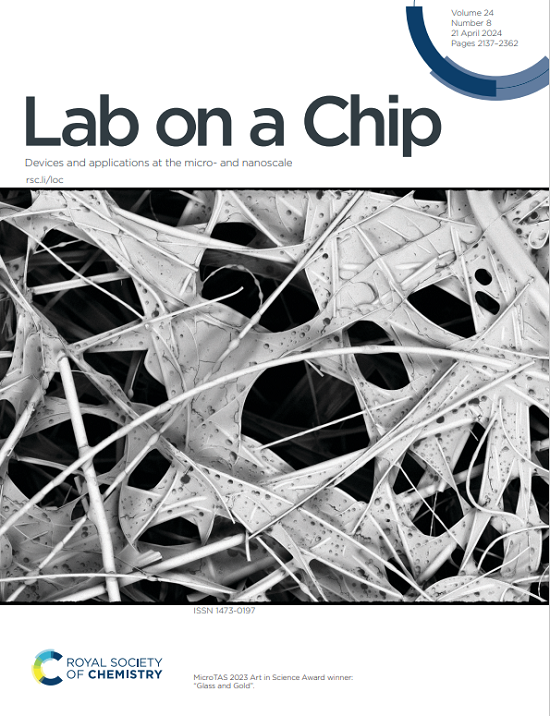Impact of multiphasic pore-scale interactions on gas hydrate formation and dissociation characteristics and kinetics: a microfluidic study
IF 6.1
2区 工程技术
Q1 BIOCHEMICAL RESEARCH METHODS
引用次数: 0
Abstract
Understanding the multiphasic interactions governing gas hydrate formation and dissociation is critical for optimizing natural gas storage and extraction. This study investigates the characteristics and kinetics of methane hydrate formation and dissociation within porous media using a microfluidic chip platform designed to simulate natural conditions. By introducing methylene blue for enhanced phase differentiation, five distinct hydrate morphologies—block, vein, point, membrane, and shell—were identified. These morphologies were strongly influenced by multiphasic interactions involving water, gas, and solid phases. Block and vein hydrates predominantly formed in water-saturated pores, while point and membrane hydrates appeared as coatings associated with gas migration. Shell hydrates emerged post-gas relocation, filling pore spaces. During dissociation, free gas presence significantly accelerated the dissociation process, achieving rates approximately 12 times faster than in water-only systems. Gas migration played a pivotal role in hydrate fragmentation and dissociation kinetics. These findings deepen our understanding of gas hydrate behavior under multiphasic conditions, offering valuable insights for enhancing natural gas storage and extraction.

多相孔隙尺度相互作用对天然气水合物形成和解离特性及动力学的影响:微流体研究
了解控制天然气水合物形成和解离的多相相互作用对于优化天然气储存和提取至关重要。本研究利用模拟自然条件的微流控芯片平台,研究了多孔介质中甲烷水合物形成和解离的特征和动力学。通过引入亚甲基蓝来增强相分化,确定了五种不同的水合物形态——块状、静脉状、点状、膜状和壳状。这些形态受到涉及水、气和固相的多相相互作用的强烈影响。块状和脉状水合物主要形成于水饱和孔隙中,而点状和膜状水合物则以涂层形式出现,与气体运移有关。壳牌水合物在天然气重新定位后出现,填充孔隙空间。在解离过程中,游离气体的存在显著加速了解离过程,达到的速率大约是纯水系统的12倍。气体运移在水合物破碎解离动力学中起着关键作用。这些发现加深了我们对多相条件下天然气水合物行为的理解,为加强天然气的储存和开采提供了有价值的见解。
本文章由计算机程序翻译,如有差异,请以英文原文为准。
求助全文
约1分钟内获得全文
求助全文
来源期刊

Lab on a Chip
工程技术-化学综合
CiteScore
11.10
自引率
8.20%
发文量
434
审稿时长
2.6 months
期刊介绍:
Lab on a Chip is the premiere journal that publishes cutting-edge research in the field of miniaturization. By their very nature, microfluidic/nanofluidic/miniaturized systems are at the intersection of disciplines, spanning fundamental research to high-end application, which is reflected by the broad readership of the journal. Lab on a Chip publishes two types of papers on original research: full-length research papers and communications. Papers should demonstrate innovations, which can come from technical advancements or applications addressing pressing needs in globally important areas. The journal also publishes Comments, Reviews, and Perspectives.
 求助内容:
求助内容: 应助结果提醒方式:
应助结果提醒方式:


